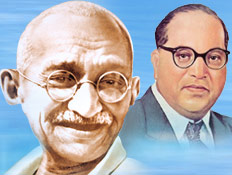Sir Chandrasekhara Venkata Raman, CBE (Tamil: சந்திரசேகர வெங்கடராமன்) (7 November 1888 – 21 November 1970) was an Indian physicist, who was awarded the 1930 Nobel Prize in Physics for his work on the scattering of light and for the discovery of the Raman effect, which is named after him.
 Biography
BiographyChandrasekhara Venkata Raman was born on November 7, 1888 in Tiruchinapalli, Tamil Nadu. He was the second child of Chandrasekhar Iyer and Parvathi Amma. His father was a lecturer in mathematics and physics, so he had an academic atmosphere at home.
Early years
He completed his BA and MA in Physics from the Presidency College, Madras . He entered Presidency College, Madras, in 1902, and in 1904 passed his B.A. examination, winning the first place and the gold medal in physics; in 1907 he gained his M.A. degree, obtaining the highest distinctions. He joined the Indian Finance Department as an Assistant Accountant General in Calcutta. As the story goes, one evening while returning from work, he spotted the sign of the Indian Association for the Cultivation of Science. He started visiting the laboratory after office hours and did experiments, which culminated with his Nobel Prize winning work.
In 1917, Raman resigned from his government service and took up the newly created Palit Professorship in Physics at the University of Calcutta. Simultaneously, he continued doing research at the IACS, where he became the Honorary Secretary. Raman used to refer to this period as the golden era of his career. Many talented students gathered around him at the IACS and the University of Calcutta. He was president of the 16th session of the Indian Science Congress in 1929.
Raman won the 1930 Nobel Prize in Physics for his work on the scattering of light and for the discovery of the Raman effect. Raman spectroscopy is based on this phenomenon. An interesting anecdote goes that he booked his tickets to Stockholm several months before the Nobel prizes were announced.
Raman also worked on the acoustics of musical instruments. He worked out the theory of transverse vibration of bowed strings, on the basis of superposition velocities. This does a better job in explaining bowed string vibration over Helmholtz's approach. He was also the first to investigate the harmonic nature of the sound of the Indian drums such as the tabla and the mridangam.
In 1934, Raman became the director of the newly established Indian Institute of Science in Bangalore, where two years later he continued as a professor of physics. In 1947, he was appointed as the first National Professor by the new government of Independent India.
He also started a company called Travancore Chemical and Manufacturing Co. Ltd. in 1943 along with Dr. Krishnamurthy. The Company during its 60 year history, established 4 factories in Southern India. [1]
He was knighted in 1929 and awarded the Bharat Ratna in 1954. Raman was also awarded the Lenin Peace Prize (1957).
CV Raman is the uncle of three world renowned Physicists Subrahmanyan Chandrasekhar Nobel laureate, Sivaramakrishna Chandrasekhar FRS, known for Liquid crystal research and Sivaraj Ramaseshan, ex director of Indian Institute of Science.
India celebrates National Science Day on the 28th February of every year to commemorate Raman's discovery in 1928.
Middle years
He retired from the Indian Institute of Science in 1948 and a year later he established the Raman Research Institute in Bangalore Karnataka, serving as its director and remained active there until his death in 1970, in Bangalore, Karnataka, at the age of 82.
Later years
Quotes
For compact work, see: Scientific Papers of CV Raman, Ed. S Ramaseshan, Indian Academy of Sciences, Bangalore 1988.
Vol. 1 - Scattering of Light (Ed. S Ramaseshan)
Vol. 2 - Acoustic
Vol. 3 - Optica
Vol. 4 - Optics of Minerals and Diamond
Vol. 5 - Physics of Crystals
Vol. 6 - Floral Colours and Visual Perception
Vol, 7 - Bibliography
Raman laser
Raman scattering
Raman spectroscopy
Raman amplification
Resonance Raman spectroscopy
Raman Research Institute
Raman optical activity
Raman (crater)
 Lefthit
Lefthit
No comments:
Post a Comment